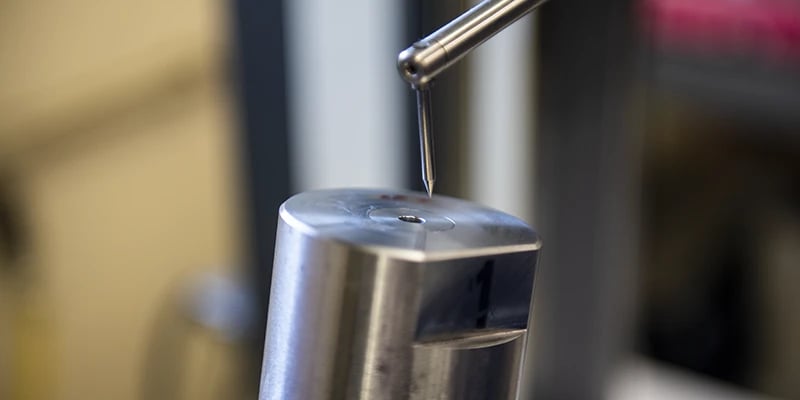August 1, 2022 •John Harvey

One of the most critical decisions today’s manufacturers face is identifying the ideal die insert to help create the right tool for the right application. Durability, quality, lead time, and versatility are the primary considerations manufacturers must take into account when choosing the right die for the job; however, this decision gets even more complicated when you factor in a variety of market forces like supply chain instability, labor shortages, and cost increases.
This is where the choice between steel and carbide (tungsten) die inserts can have a major impact on a tool manufacturer's ability to provide reliable products for some of today’s biggest growth industries like automotive, aerospace, and munitions.
In this blog, we’ll briefly examine what differentiates steel from carbide die inserts, and the important benefits of each to help manufacturers select the best die for their application.
When considering whether steel inserts are the right choice for your die manufacturing process, there are a couple key variables to look at.
First, volatile elements found in some die making processes such as heat treating, coatings, and gas treatments can negatively impact the end product. Secondly, the use of steel die inserts in harsh manufacturing conditions can reduce the quality, durability, reliability, and overall service life of the tool — and lead to increases in maintenance costs or more frequent disruptions in production programs.
When used in less intense industrial facilities, steel die inserts can provide several important benefits, particularly for manufacturers of a certain size or production runs of a certain quantity. The ideal application for steel die inserts is in short-to medium-size production runs where lead times are a critical challenge, and pre-production set-up processes need to be streamlined in order to meet production deadlines.
In addition, steel die inserts are effective in controlling costs because of the speed and ease in which they can be machined and processed. Plus, steel inserts provide several other important benefits in short- to medium-size runs including:
In evaluating the right carbide die insert for the die manufacturing process, it’s important to consider both the kind of coating and the industrial application.
Carbide die inserts are best suited for longer production runs and harsher forming materials with greater levels of alloy content. In addition, a compatible coating can increase the carbide wear resistance and lubricity, and make inserts more valuable in manufacturing environments where durability and reliability are key.
One of the more common carbide dies used in tool fabrication is tungsten carbide. Tungsten carbide comes in many different grades that are categorized based on how much cobalt is added as a binding agent to the actual carbide die. As the percentage of cobalt increases — usually in increments of 6%, 10%, 12%, 15%, 20%, and 25% — the hardness of the carbide die decreases as it conversely becomes more resistant to direct impact during manufacturing.
Ideal for more rigorous industrial applications, carbide die inserts provide a number of important benefits in building tools with an extended service life, including:
With decades of innovation and excellence in helping manufacturers maximize the life of their tools, Header has the state-of-the-art technology and experience to provide error-free steel or carbide die tooling quickly to reduce lead times and help increase productivity. Our expert technicians combine superior craftsmanship and precise tooling machines to create steel and carbide dies that help manufacturers produce a tool designed for the long haul.
In addition, we produce complete die assembly packages to help manufacturers decrease costs over the life of their tools, reduce the stress on their in-house tool rooms, and allow them to better serve their customers.